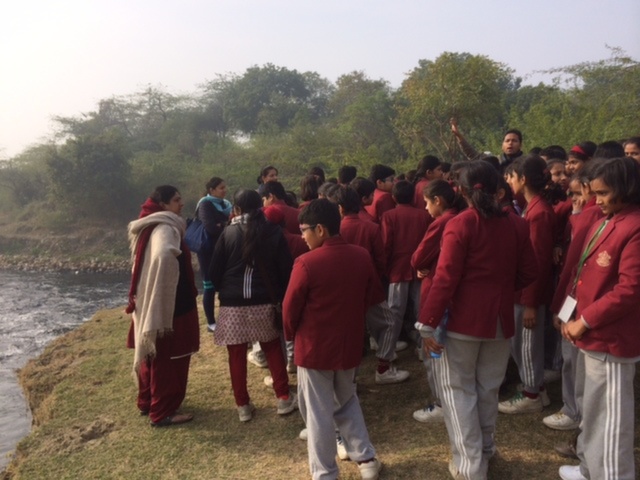Yamuna Walk
The students of class V went on a Yamuna Walk on Saturday 20 December, 2014. The visit was conducted by Swechha, a youth-run and youth-focused NGO engaged in environmental and social development issues.
The group of students left School at 7.45 am on a cold wintry morning. On the way the representatives of the NGO gave a brief introductory talk on the Yamuna which included it's origin, the states through which it flows, the rising pollution in in the river and the importance of the barrage on it.
After about an hours bus ride from School, we reached a bridge situated at Sonia Vihar (Delhi section- Wazirabad) from where we were shown the barrage. The importance of the barrage was discussed-how the Yamunas flow is regulated through barrages upstream and how seasonal flows depend on rainfall in the upper catchment and release from the barrages upstream.
The bus proceeded towards the Delhi-U.P border, where walked to the banks of the Yamuna. The students were prompted to ' take in ', as it were, the fresh air and observe the blackish colour of the the river-water, indicative of the high pollution in the water. They were also asked to observe the natural surroundings and were informed that the number of birds in the river were far less than used to be in the past. Besides this, they were also asked to note the absence of plant life.
[gallery columns="2"]
From here the students headed to the Najafgarh Dam. Upon reaching the dam we were taken to a point where we could clearly see the sewage of the city being drained into the clean water of the Yamuna river. Subsequently, we were also taken to a point where certain illegal construction activity was being carried on.
The students further proceeded to Kutsiahghat were they were given a brief on how the Yamuna has shrunk over a period, i.e the Yamunas 22-km stretch in Delhi is barely 2 per cent of the length of the river, but contributes over 70 per cent of the pollution load. They also saw the high level of pollutants which had turned the water of the river black.
After the visit the students were asked to contribute their bit to the clean Yamuna campaign by writing letters to the authorities concerned.
The visit developed an understanding among the students towards the pollution increase due to human activities in and its future consequences. They were also sensitized to the fact that if the trend to pollute water continues then after a few generations there will be no clean water available.
The walk raised the awareness of students about pollution and the need to do something .The trip was unusual in nature with a deep impact of social issues so relevant to humanitys existence.
Compiled by Ms. Abha Mishra.













